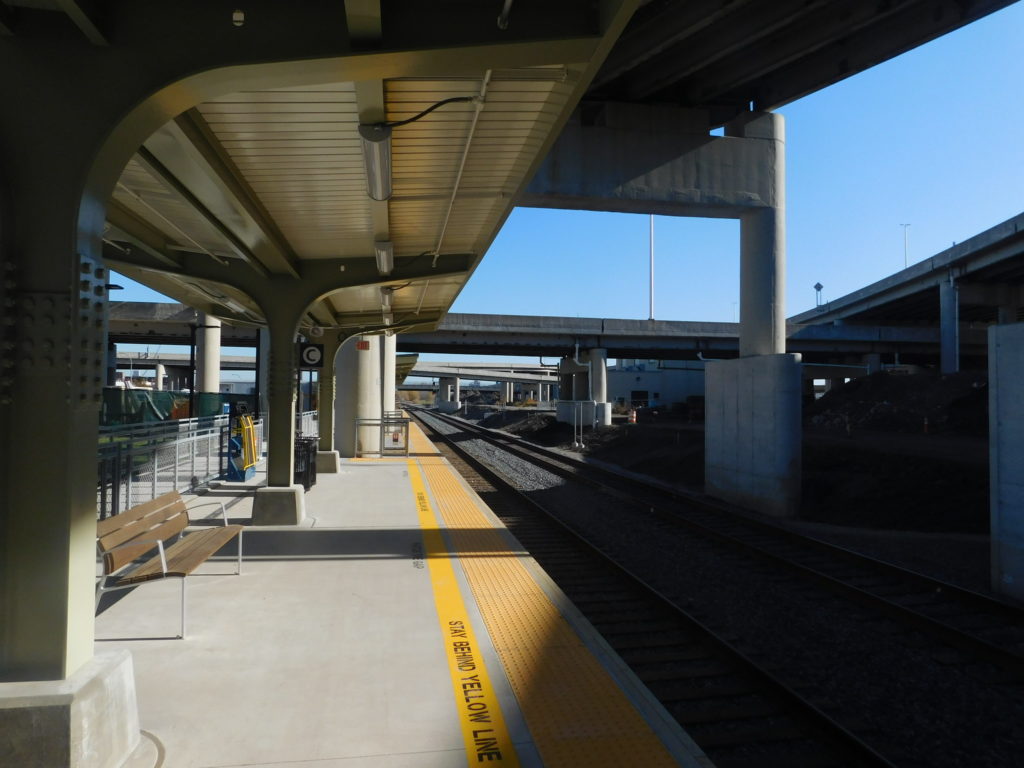Three things to know about the Senate’s FY21 appropriations for transportation
Last month, the Senate Appropriations Subcommittee on Transportation, Housing, and Urban Development released a proposal for fiscal year 2021 that cuts funding for important transit and passenger rail grant programs. With only 10 days until the government runs out of funding, the clock is ticking for the House and Senate to reach an agreement on their two very different appropriations bills.

An empty Amtrak station. Photo of Buffalo Exchange Street Station by Adam Moss on Flickr’s Creative Commons.
During this year of tumult, it came as no surprise that Congress failed to reach an agreement on fiscal year 2021 appropriations in September. With 10 days until the continuing resolution passed to keep the government open expires on December 11th, Congress needs to move quickly to reach an agreement.
Problem: The Senate’s transportation appropriations and the House’s transportation appropriations are very different.
Last week, the Senate Appropriations Subcommittee on Transportation, Housing, and Urban Development released its dismal proposal for fiscal year 2021 appropriations. This bill provides significantly less funding than the House-passed FY21 appropriations, and it doesn’t include any supplemental emergency appropriations for COVID relief.
Here are the three most important things to know about the Senate’s transportation appropriations.
1. No emergency relief for transit or passenger rail grant programs
COVID-19 has hit U.S. public transportation and passenger rail hard. Transit agencies are in desperate need of at least $32 billion in emergency operating relief to maintain base levels of service, and Amtrak has repeatedly requested at least $4.9 billion from Congress to avoid further cuts to jobs and service. But it’s not just operations that need a boost: transit and passenger grant programs, like the Capital Investment Grants program, need supplemental emergency funding too. There are $23 billion worth of projects in the CIG pipeline, demonstrating the demand for additional public transit across the country.
But there’s no emergency funding for either transit or passenger rail grant programs in the Senate’s appropriations bill. The Senate has also failed to pass a separate relief bill (like the House’s HEROES Act), and are missing a chance to appropriate any emergency money—be it operating support or emergency funding for discretionary programs, as the House included in its appropriations bill—in this proposal.
2. Capital Investment Grants program takes a beating
The Senate bill cuts funding for the Capital Investment Grants (CIG) program, the federal government’s primary discretionary program for new transit projects. The Senate proposes $1.889 billion, which is less than the House-proposed level of $7.175 billion—$5 billion of which is supplemental emergency funding. With COVID-19 shutdowns and the ensuing economic slowdown throwing off the financial calculus of these large infrastructure projects, this emergency funding will ensure that critical CIG projects can proceed without delay.
3. Passenger rail funding slashed
The Consolidated Rail Infrastructure and Safety Improvements (CRISI) program provides funding for capital projects to invest in rail infrastructure. This is the key program supporting new and expanded passenger rail service across the country. We have this program to thank for successful projects such as the upcoming return of passenger rail to the Gulf Coast.
Yet the Senate bill undercuts the House’s proposal for this critical program, proposing $340 million where the House appropriated $500 million. In addition, the Senate bill requires that 25 percent of CRISI appropriations be reserved for rural areas.
Robust and consistent appropriations are critical to supporting transit and rail projects across the country. As the House and Senate negotiate a final FY21 appropriations bill, we hope lawmakers remember how essential these programs are to our communities—especially as COVID-19 continues to demonstrate that essential workers, and therefore all of us, are reliant on public transit. We must invest in these systems to support our economy today, and recovery tomorrow.




















1 Comment